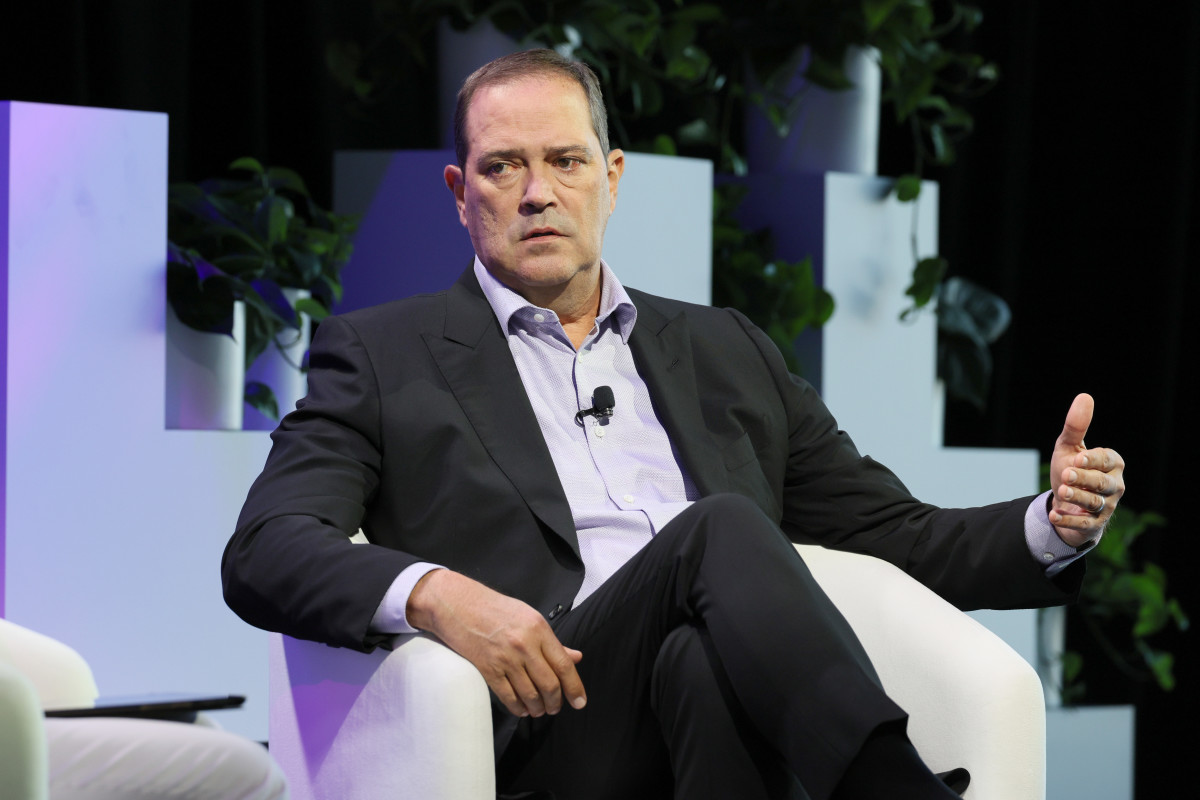
Before the dot.com bust erupted in 2000, there was the dot.com boom of the late 1990s. Stocks jumped so high, so fast, and for so long that former Federal Reserve Chairman Alan Greenspan described the phenomenon as "irrational exuberance."
In the middle of all that froth was Cisco Systems (CSCO) , whose shares soared from $1.20 at the end of 1994 before topping out at $80 in March 2000, just before a 2-for-1 stock split.
💰💸 Don’t miss the move: SIGN UP for TheStreet’s FREE Daily newsletter 💰💸
The reason for this 6,500% exuberance was that Cisco made the Internet work with routers, switches, and related cabling, software to enable video, and all sorts of equipment so networks could talk to each other.
And the company's order book was overflowing because all the dot.com newbies needed the tools get their ideas and products onto the Internet.
Related: Top stocks that could rock markets this week
Then, in mid-2000, the bubble broke. Many startups disappeared in months or weeks, and Cisco saw its order books seemingly empty. Its shares plunged as a bad situation turned ghastly. And Cisco seemed to fade into obscurity for years.
Cisco's earnings cheer investors
Wednesday, the company's picture appeared to change. It reported better-than-expected earnings and better-than-expected guidance in its fiscal second quarter, which ended on Jan. 25.
Not just because its traditional networking offerings are seeing more growth, but rather, Cisco has been steadily building up a business specifically to make artificial intelligence and its vast data centers work.
In the second quarter, that business grossed $350 million in business from hyperscalers like Microsoft (MSFT) , Alphabet (GOOGL) , Meta Platforms (META) and Amazon.com (AMZN) .
The business had gross revenue of about $700 million in the first half of the fiscal year.
CEO Chuck Robbins said on the company's earnings call, "We are on track to exceed $1 billion in AI infrastructure orders " before the fiscal year ends in July.

Plus, Cisco's acquisition of software company Splunk is paying off. Cisco bought the data analytics company for $28 billion in early 2024. Splunk's software searches, monitors, and analyzes machine-generated data
So, the stock jumped 6.6% in after-hours trading to $66.65 after the regular close of $62.53. That was up 10 cents, or 0.2%, from Tuesday.
The regular close is up 5.6% this year and 33% from a mid-summer low of $44.50. The stock's chart since the depths of the Covid-19 pandemic is basically positive.
More Tech Stocks:
- Analysts overhaul Palantir stock price targets after earnings
- Veteran trader says watch Nvidia, quantum computing stocks
- Apple's AI strategy could be saved by an unexpected source
Cisco offers robust outlook driven by AI
The company earned 94 cents a share on revenue of nearly $14 billion, up from 91 cents a share a year ago on revenue of $12.8 billion.
And it guided higher for both the third quarter and the full year.
The full-year estimate is now between $56 billion to $56.5 billion. The prior guidance had been $55.3 billion to $56.3 billion.
Cisco is so confident in its prospects that it raised its dividend a penny to 41 cents a share. Oh, and it announced a new $15 billion share buyback.
Related: Veteran fund manager issues dire S&P 500 warning for 2025







